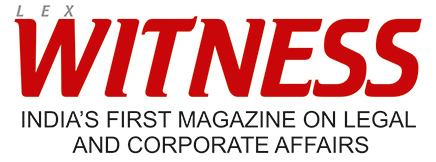
or

Various international and national associations and agencies have been producing professionals who conduct valuation of various assets including Intellectual Property Assets (hereafter IP assets). Internationally, the American Institute of Certified Public Accountants, American Society of Appraisers, Canadian Institute of Chartered Business Valuators, National Association of Certified Valuation Analysts, The Institute of Business Appraisers, among others are responsible for bringing out policy documents relating to valuation and appraisal of various assets including IP assets. Nationally the Institute of Chartered Accountants in India and the Institute of Chartered Management Accountants deal with valuation and appraisal of various assets.
International Agencies involved in valuation have released an International Glossary of Business Valuation Terms (hereafter International Glossary), which contain commonly used terms in valuation and appraisal activities. This international glossary defines valuation as “the act or process of determining the value of a business, business ownership interest, security, or intangible asset.”1 This process of determining the value of intangible asset, which includes IP assets, is guided by the principles of valuation determined by these agencies. In this article, we shall explore some of these guiding principles that determine the valuation of IP assets.
The first principle that guides valuation of IP assets is the person who carries out such an exercise. A valuation specialist (in short, valuer) or an appraisal specialist (in short, appraiser) would conduct the valuation. These people are required to have considerable expertise not only in the area of the IP asset (in terms of understanding the nuances of these IP assets like patents, copyright, etc.) but also in the valuation of the said IP asset. The appraiser is expected to follow certain guiding principles (as specified by the organizations governing the policy relating to the valuation in the country) while conducting the appraisal or the valuation of the IP asset.
The second principle requires that the IP valuation exercise should specify the IP asset that is being appraised or valued. Such specification could include either the legal details of IP assets (like patent numbers, trademark numbers, etc.), or its characteristics like its useful life, the strength, the broadness of the patent, the recognition of the trademark, the variation in the earnings capability, etc. This becomes critical, as the assumptions relating to the valuation would be based on the specification of the IP asset involved in the valuation exercise.
The firm does not carry out valuation of IP assets regularly. It is carried out only in specific circumstances like mergers and takeover activities, joint venture, licensing or franchising purposes, bankruptcy, sale of the individual IP asset, or litigation, among other reasons.
Having said this, one need to be aware, however, that the new accounting format specified by the Indian Companies Act 2013 mandates the representation of IP assets on the balance sheet of the firm, as per the provisions of stipulated accounting standards implemented in India. Under the accounting system, generally IP assets are represented at costs, subject to certain adjustments provided under accounting standards.
In addition to this, the taxation authorities in India mandate the valuation of IP assets for taxation purposes. For instance, whenever an IP asset is being transferred from one person to the other for a commercial consideration, the taxman would be interested in understanding the capital gains impact of such a transaction and would require the parties to report the valuation of the IP asset along with the cost of acquiring it in order to ascertain the capital gains on such transaction. Also, any technology transfer agreements relating to IP assets would also require reporting the valuation of the IP asset and the resultant tax obligation upon the parties. In addition to this, the new Goods and Services Tax (GST) is also imposed on certain kinds of transactions relating to IP assets.
Valuation of an IP asset requires the cash flows associated with such asset to be identifiable. This is very crucial for valuation, because, without the cash flow, neither the costs associated with the asset, nor the benefits associated with it, could be ascertained. While valuing IP assets, the cash flows could either help the firm in increasing its revenue or in reducing its expenses.
For instance, if a patent is licensed to others in return for a royalty payment, then the IP asset is increasing the revenue of the firm. Similarly, if such patents provide the firm with market exclusivity, the firm would be able to charge a higher price to customers leading to higher revenue for the firm.
On the contrary, if patents are used in cross-licensing deals, then such patents help the firm reduce its license fee payment to others, thereby reducing the costs of the firm, which in turn increases the surplus available to the shareholders. In both these circumstances, the patent has a value that needs to be ascertained by the appraiser.
When valuing IP assets, the principle of arm’s-length transaction would usually be invoked. This principle indicates that the parties negotiating the value of IP assets are unrelated to each other and are trying to maximize their benefits from the transaction through reasonable and hard bargain. For instance, if two companies are negotiating technology transfer and they are unrelated to each other, then the valuation finalized through negotiations would fulfill the criterion of arm’s-length transaction and the tax authorities would be happy with the valuation of such technology, as it would be assumed that each party has arrived at the valuation through a hard bargaining process. However, if a foreign parent company is transferring its technology to its Indian subsidiary company, then fulfilling this condition would generally be difficult.
The parties involved in the transaction of IP assets would typically have asymmetric information about the asset as well as the assumptions involved in valuing it. Valuing an IP asset involves making assumptions about a lot of things, which might not be equally available or equally acceptable to all the parties. The party not involved in such valuation exercise would asymmetric information relating to the valuation exercise, which would have lead to divergence in valuation numbers. In order to deal with this concern, it is generally insisted that a neutral third party is involved in valuing the IP asset, who would then provide his opinion on its valuation along with a detailed description about the assumptions on which the valuation of the IP asset is conducted.
The appraiser of an IP asset would provide an appraisal of the IP asset in the form of a report. But the valuation so provided in the appraisal report is intended not to be exact value of the IP asset. Instead, it can be safely assumed that the value so provided is indicative value of the IP asset calculated based on certain assumptions. Such a report is known to consist a fairness opinion about the value of the IP asset. Such fairness opinion would be specifically insisted by financial institutions, where they are required to provide financial assistance based on the value of IP assets. While accepting such valuation reports, they would either require an indemnification by the appraiser for the value of the financial exposure or they would require a certification that the valuation of the IP asset conducted would meet the legal and accounting requirements specified in the country.
The appraiser of the IP asset would issue the valuation report as on a particular date. The report would also specify that the fair value of the IP asset so determined would be valid for a certain period of time (say 15 days, 30 days, or 90 days and so on), after which the assumptions made for the valuation might change and hence the valuation might also be subjected to change. Using a valuation report for a transaction after the expiry of such period would entail that the parties are carrying out the transaction at their own risk.
Any valuation would be based on certain assumptions. The International Glossary defines a premise of value as “an assumption regarding the most likely set of transactional circumstances that may be applicable to the subject valuation; for example, going concern, liquidation.”2 The premise of value is the assumptions relating to the IP asset being valued. These are the assumptions are about how important factors relating to the IP asset would pan out during and subsequent to the valuation exercise. These circumstances would be the current / existing circumstances or it could relate to how things might pan out in future. The appraiser would make certain assumptions about the IP asset based on the experience of the appraiser or historical precedents or the industry practice for that IP asset or sometimes even the statutory stipulations for the IP asset. We shall explore the premise of value for various IP assets in subsequent articles.
The valuation report is expected to specify the technique of valuation used in valuing the IP asset. The appraiser could adopt any or all of the various techniques of valuing IP assets like the cost method, the income method, and the market approach. The appraiser would adopt a particular technique depending on the type of the IP asset being valued and also the circumstances of the valuation exercise. We shall explore the techniques of valuation in greater detail in subsequent articles.
Dr. Nithyananda is currently working as a Faculty Member at the Indian Institute of Management Tiruchirappalli, Tamil Nadu, India, where he teaches electives like Strategic Management of Intellectual Property Rights, Business Models for Managing Intellectual Property Rights, and Legal Aspects of Marketing apart from the core course of Legal Aspects of Business. He earned his PhD in the area of intellectual property and its management from the National Law School of India University, Bangalore. He is also trained at the Harvard Business School on effective management teaching using business cases and business simulation. He has designed a simulation-based course “Strategic Management of Intellectual Property Rights”, which he has been teaching at various institutions and universities at France, Malaysia, Singapore, and Sri Lanka for the last 7-8 years. He has also trained working executives and management professionals on Managing Intellectual Property Assets, which is an area he is very passionate about.

Lex Witness Bureau

Lex Witness Bureau

Lex Witness Bureau

For over 10 years, since its inception in 2009 as a monthly, Lex Witness has become India’s most credible platform for the legal luminaries to opine, comment and share their views. more...
Connect Us:


The Grand Masters - A Corporate Counsel Legal Best Practices Summit Series
www.grandmasters.in | 8 Years & Counting
The Real Estate & Construction Legal Summit
www.rcls.in | 8 Years & Counting
The Information Technology Legal Summit
www.itlegalsummit.com | 8 Years & Counting
The Banking & Finance Legal Summit
www.bfls.in | 8 Years & Counting
The Media, Advertising and Entertainment Legal Summit
www.maels.in | 8 Years & Counting
The Pharma Legal & Compliance Summit
www.plcs.co.in | 8 Years & Counting
We at Lex Witness strategically assist firms in reaching out to the relevant audience sets through various knowledge sharing initiatives. Here are some more info decks for you to know us better.
Copyright © 2020 Lex Witness - India's 1st Magazine on Legal & Corporate Affairs Rights of Admission Reserved